Mission 2000

Eventually, if the Mission 2000 program works according to plan (for more details, see Mission Frontiers, Vol. 7, Nos. 3 6. or write or call for your copy of the Mission 2)0 Introductory Kit), the USCWM will be only one among 30 leaders of equally involved Networks of 100 congregations each.
When a minimum of three such networks are moving forward, a consortium will be formed which will take the leadership out of our hands and place it in the hands of all the Network leaders, the Consortium. Then, gradually, as other Networks join in, the Consortium will expand that consortium to the planned 30 Networks, each servicing at least 100 congregations.
Three Networks may seem to be a very small start. But the great value and urgency of the formation of a Consortium of at least three is that we can then shift the focus of the $17.50 registration fees people pay from the Centers own financial need to a larger set of priorities which the Consortium will manage.
That is, in the pilot stage people still have to be consciously giving to some worthy 'Crucial Neutral" cause when they register for the campaign. The suggested $1750 registration sounds a lot like the $1&95 which the Center itself proposes people give, doesn't it? Two dollars covers the vision building materials registered participants in Mission 2000 will receive, and $15.50 will go to the Consortium's kitty for dispersal to one of the ten neutral projects which the Consortium determine are crucial to the advancement of the Gospel to all peoples.
Why stress this initial registration fee? Because at least ten crucial areas of need exist (see Mission Frontiers, Vol. 7, Nos. 1 6, or the Introductory Kit) for which conventional fund¬raising efforts ate not appropriate. We believe our Center, for example, is crucial to the overall movement of Clod in a mighty mission renewal movement in this
country and the world; therefore it is worthy of support. The IJSCWM seeks to serve all evangelical mission agencies; therefore it is neutral. Yet it must maintain that neutrality by avoiding any appearance of undercutting the agencies it seeks to serve; therefore, we believe, it must be funded by some mild, one time "registration' fee.
The Mission 2000 program len, too, will incorporate this same, mild, onetime 'Registration Fee' which will initially (but never again) move a small amount of money into a national level kitty to be supervised by the Mission 2" Consortium. These Consortium members, the leaders of the different member Networks, will focus this money moment by moment on the particular "neutral crucial" project which most needs temporary assistance.
So. The USCWM is only one of the 30 proposed national Networks. Already over tOO congregations have written to us to explore a pilot trial. Many of them will probably later move over to some oilier network if their own denomination or some other parachurch agency becomes a Network. But we do not doubt that at least I® congregations will work with us that is, that we ourselves will have at least that many which will elect not to affiliate with another Network.
However; for the time being, the Center is it, and we are, ernban'assingly to us, the only "neutral crucial' now being funded by Mission 2000 registration fees. We hope this situation will not last long, but that we will soon find a national level organizer who will be able to get a Consortium going and widen out the list of "neutral cruciais This is not merely a fund raising effort for the U.S. Center for World Mission, and we'd like to destroy that image. Mission 2000 has certainly never been intended to be such a short sighted program although centers such as ours all across the world are one of the ten
categories in the provisional list of "neutral crucial" activities needing assistance in order for a thriving Mission Renewal movement to gain momentum and become a mighty, major force in American life and on a world level.
What is Happening with the Program?
One of the leaders whom we had hoped would take up national leadership of this project a man who was 'between jobs' is now no longer in that condition. He is heavily occupied with two new tasks. Mother feels his desires are primarily in personal discipleship and Bible teaching, rather than in the highlevel diplomacy necessary in the early stages of a program like Mission 2 that involves up to 30 Network leaders who will each sponsor the program with 100 congregations in their own spheres of influence.
Let Your Congregation Be a Test Pilot!
What does a pilot congregation do? It sets up at least one Mission Renewal Teams UvIRT). An MRT consists of two or three people who visit key missionminded families in the church or neighboring congregations and sign them up for a brief Mission Update Discovery program which closes with an invitation to a regular monthly Mission Fellowship meeting.
Following Dr. Donald McGavran's now famous proposal ("A Giant Step," Mission Frontiers, Vol. 7, No. 1.3, p. 31, also available in the Mission 2000 Introductory Kit), we believe that no matter what else goes on at the local leveldriving mission committee, major mission giving program, booming annual mission conference, whatever else there may be there simply must be a fellowship focused exclusively upon the mission outreach of the church worldwide. The re¬founding of 100,000 local "Mission Fellowships" (as there used to be 70 years ago) is the cm of Dr. McGavran's proposal, and it is the main intermediate goal which Mission 2000 is designed to achieve, d
Once even a single Mission Fellowship is established in a local church, many other good things can come. We are pledged to support the monthly meetings of all those congregations related to our own Network We will send slides, audio tapes, video tapes, whatever seems best for each fellowship to utilize. The Mission WW Consortium, once it is founded, will add muscle to this monthly assistance. And one Fellowship might eventually sprout a Youth Mission Fellowship, another general Fellowship. and another, and another. . in your area ... and in churches across the country with which your congregation may be closely relalet
We are in the early days of a major mission renewal movement It combines many budding, vital elements: the Concerts of Prayer movement, the Global Prayer Digest, the national (59 centers this year) program of the Perspectives course, etc.
Hang in! Believe! Pray! Labor! The
redemption of this planet draws nigh. We
know that it is possible to impact every one of the remaining 17,000 peoples by the year 1955 (so as to establish a powerful witness by the year 2000), f only 10% of the evangelical congregations of the world get involved in reaching Unreached Peoples. Already the Christian movement is the most powerful social force in country after country. It has reached the 25 percent level in Korea, in Guatemala, El Salvador, most of Africa south of the Sahara even in the Soviet Union and, indeed, in many of the Iron Curtain countries. It is pushing up there in the Philippines, Indonesia, most Latin American republics, and even in China! This is no time to give in to local trivialities in our own lives, but to give ourselves to the most exciting thing on earth so that "this Gospel (may) be published in the whole world as a testimony to all peoples, and then shall the end come" (Mart 24:14).
If you think a group within your
congregation would like to fly a pilot Mission 2000 pro grain, ask for the Introductory Kit To receive that and/or other materials, write to Ron Saito, ci o U.S. Center for World Mission, 1605 Elizabeth Street, Pasadena, CA 91104.
Or call him using our 24 hour, 7 day aweek number, 818 797 1111 (where you will always find a human being. not an answering machine, to answer your general questions or to record your request for a call back).

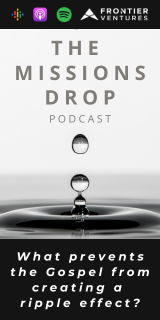
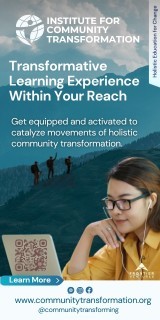

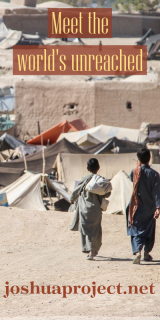
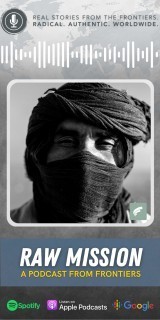
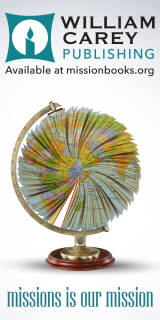
comments